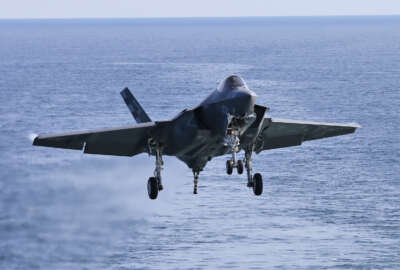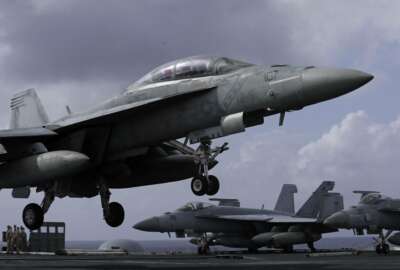
For flexibility, Navy may bypass DISA for some long-haul network needs
The Navy wants vendors to prototype an entirely new network architecture that would give its users more direct pathways to the cloud services.
The Navy has some new theories about how its bases should connect to each other, and with the internet. If they come to fruition, they could begin to displace the Defense Information Systems Agency’s longstanding role in providing the wide-area network backbone the military services depend on.
As part of a prototype project set to begin this spring, the Navy is testing whether it might make sense to bypass DISA as its main provider for long-haul telecommunications services and outsource them to one or more commercial providers. The project would both connect the Navy’s users to the commercial cloud, and connect its bases with one another.
The concept, which the Navy calls Network-as-a-Service, would fundamentally alter the logic of how data flows across Navy networks, and comes as the service aims to move 100 percent of its IT systems to public and private clouds.
Related Stories
“We have folks in the acquisition community who say, ‘Well, maybe we can do 100 percent of our job from the commercial cloud,’” Andrew Tash, the technical director for the Navy’s Program Executive Office for Enterprise Information Systems told an audience at a Navy industry day in San Diego last week. “If that’s the case, then why shouldn’t we have the most efficient access to those services and not be forced to actually log into an on-premise network and then be routed over? We really want to take advantage of direct access to those services.”
For the prototype, the Navy wants vendors to help prove or disprove its current working theory: that cloud service providers (CSPs) and telecom companies can deliver more seamless, less expensive routes between its users and the commercial cloud, do a better job of interfacing with the public internet than DISA’s current Internet Access Points, and connect Navy bases with one another.
“We have a lot of decisions to make in the Department of Navy with respect to network architecture, and many of those decisions are based on assumptions, not on quantitative information about performance,” said Will Stephens, who leads business and technology strategy for PEO-EIS. “So the purpose is to set up alternative connection methodologies to allow our users to get to the cloud through the CSP’s own internet access point, and also to get connectivity from one base to another using the CSP’s services rather than our current way and services, which we know are a little bit difficult — they’re not dynamic to allocate and adjust.”
The Navy is soliciting the work through its Information Warfare Research Project, a $100 million Other Transaction Authority vehicle it established last year for rapid IT and cyber prototypes.
Officials expect to make an award for the Network-as-a-Service experiment by Apr. 26; the Navy wants a working prototype up-and-running by July 26.
“It will be a connection to our production environment, and we’ll have two network paths from that point of presence: one across our current network path, and one across the new network path that we’re setting up as part of this Network as a Service architecture,” Stephens said. “We’ll also get non-binding cost estimations so that we can determine whether or not this is feasible from a cost perspective.”
Read more of the DoD Reporter’s Notebook
Copyright © 2025 Federal News Network. All rights reserved. This website is not intended for users located within the European Economic Area.
Jared Serbu is deputy editor of Federal News Network and reports on the Defense Department’s contracting, legislative, workforce and IT issues.
Follow @jserbuWFED





